From Lake Como’s mountain cathedrals to Venetian gothic canals, a trip to Northern Italy is surely one to remember. In this post, I will show you how I planned my nine-day trip to Northern Italy, the places I visited, and travel tips through this tried and tested guide.
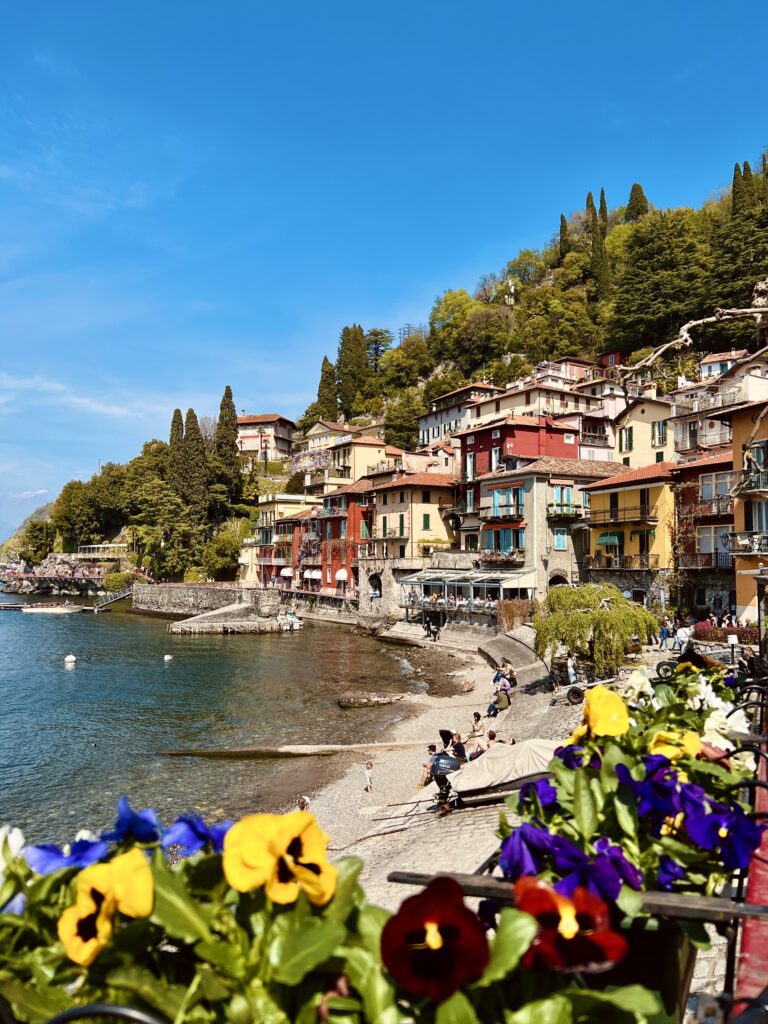
Northern Italy is a treasure trove of small towns and bustling cities each with its distinct charm, cuisines, and cultural sites. Its natural and urban landscapes have served as backdrops to some of Hollywood and history’s riveting tales of star-crossed love, war, and resilience. In April of 2022, I had the pleasure of visiting Milan, Lake Como, Verona, Padua, and Venice.
Choosing Where to Go
Italy has many regions and beautiful cities scattered along its 620-mile peninsula. Choosing where to go in this country slightly smaller than California was quite a challenge. Having relatives in Milan, a bucket list bullet to visit Lake Como, an affinity for Letters to Juliet, and a fascination for the Republic of Venice, I chose to visit Northern Italy. Additionally, many of the cities I was interested in were all well-connected via train.
If you are planning a trip to the country, I recommend picking the number of cities you visit based on the days you will spend there. A general rule of thumb is to pick three or four bases (cities where you will be staying overnight) for a trip of seven to nine days. Adding too many cities within a week-long itinerary may exhaust you. If you like fast-paced travel, however, you can definitely add more cities to your itinerary to make the most out of your trip. My style of travel tends to lean on a relaxed to moderate pace. I enjoy exploring and immersing myself in the cities without having to get up too early.
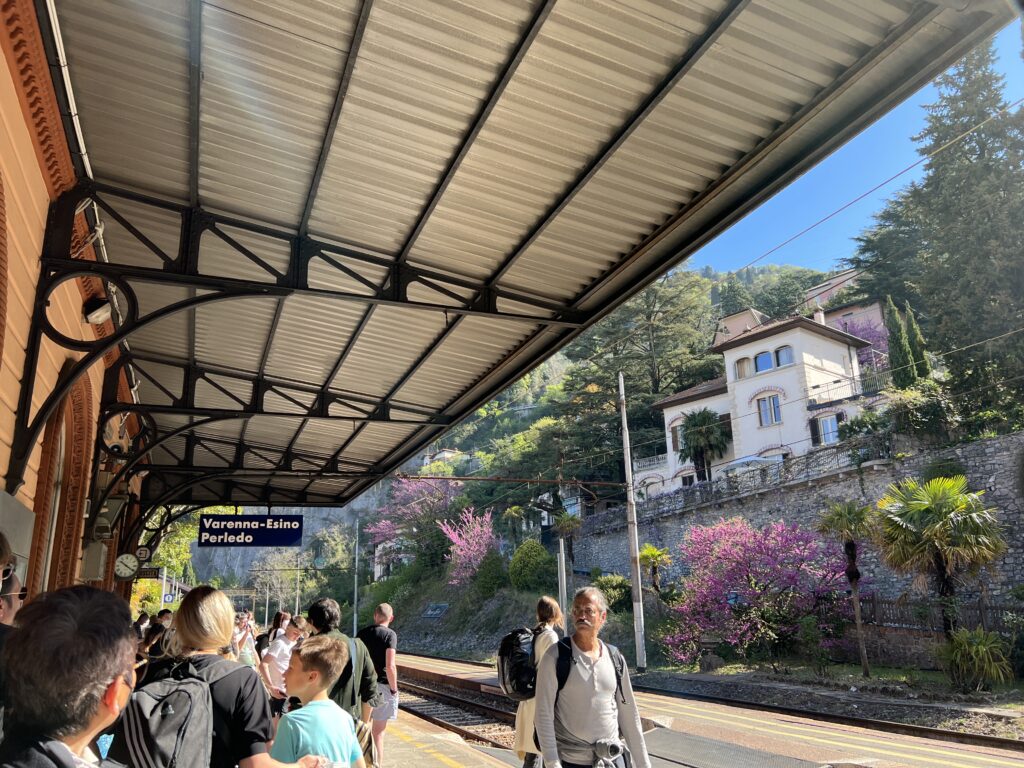
Another factor to consider when deciding where to go is understanding your transportation. Italy has a well-organized and expansive railway system that spans the country. I made sure that the cities I visited were ones I could easily access through public transportation since I did not rent a car. I also wanted to ensure that the cities were not too far apart because I did not want to spend more than two hours on a train.
With all these factors in mind, I decided to spend nine days in Italy with my base cities being Milan, Varenna, Verona, and Venice. Using Google Flights, I bought plane tickets flying from San Francisco Airport to Milan’s Malpensa Airport with a transfer in Munich. I flew back to San Francisco from Venice’s Marco Polo Airport with a transfer in Frankfurt. My airfare total was approximately $800.
Deciding When to Go
Northern Italy is beautiful no matter which season it is. However, all seasons come with their advantages and disadvantages. Spring offers moderate crowd sizes, pleasant weather, and moderately-priced flights. Summer brings in the largest volume of crowds, expensive airfare, and the hottest temperatures. Fall ushers in the low-peak season with the lowest crowd sizes and cooler weather. Winter continues the low-peak season with the coldest temperatures and lowest crowd volume. Bear in mind that winter weather and low crowds can lead to the closure or early closure of different attractions and sites.
TIP: Check the hours of operation for each attraction you would like to visit before you go. Some attractions close based on the season and day of the week.
I visited Northern Italy in early April as part of my spring break. The Easter celebrations during the week brought in flocks of European holiday goers, especially in Lake Como and Verona. April was perfect, however, in terms of the weather. A week before my trip, the weather prediction displayed a pessimistic, cold and rainy forecast. Luckily, the weather during my trip varied each day. My days in Milan and Lake Como were warm with temperatures ranging from 70 to 80 degrees Fahrenheit.
In Verona, the weather was partly cloudy with temperatures in the 60s and low 70s. The coldest temperatures were in Venice. I was relieved that the only rain I experienced during the trip was when I flew back home. Nonetheless, spring presents variable weather patterns, and you should be prepared for warm, cool, and wet days if you decide to go during that season.

Finding Where to Stay
Choosing my accommodations for the trip was another challenge. I traveled with two other people, and I had to make sure each place was less than $200 per night. Using Google Maps, I researched accommodations that were within walking distance to the attractions I would visit and public transportation. I began my search for accommodations using Expedia, Booking.com, and AirBnb. I primarily used Expedia since I could easily purchase travel insurance for each booking.
TIP: When searching for accommodations, ensure that the booking has free cancellation at least a week before your stay.
Milan
In Milan, I booked a stay at the boutique hotel, 43 Station Hotel which cost about $100 per night. The hotel was clean with modern furnishings and a delicious breakfast. Additionally, the hotel was a five-minute walk from the main railway station. While far from Milan’s historic center by foot, you could easily get to Piazza del Duomo by tram or taxi.
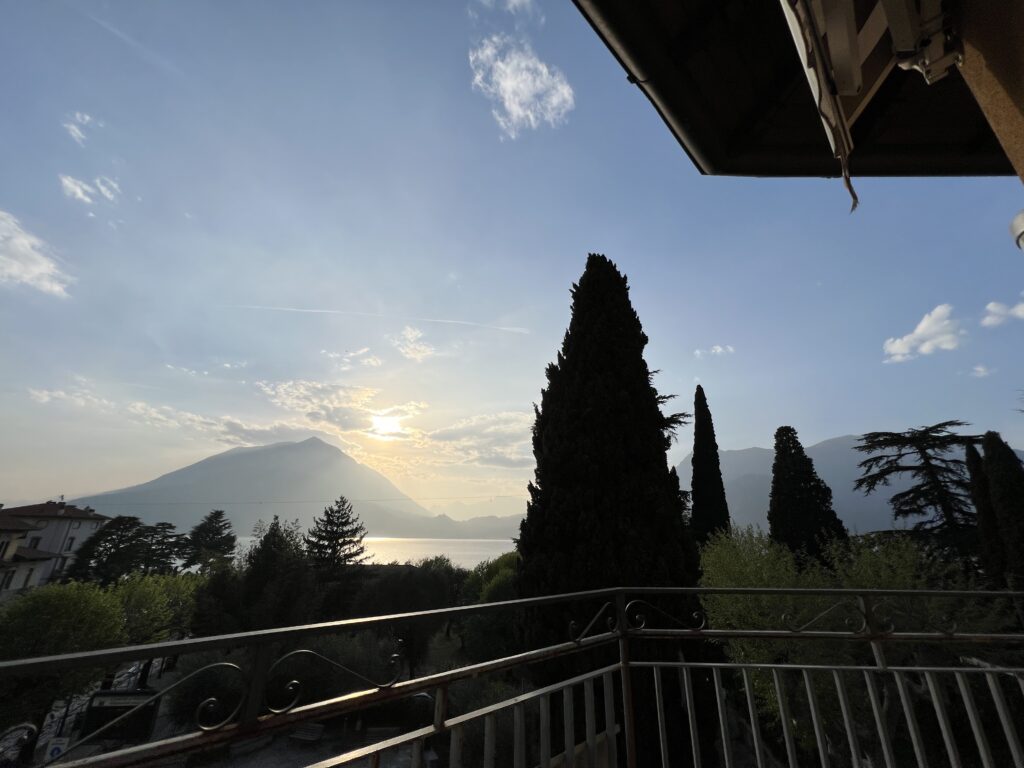
Lake Como
In Lake Como, I followed the advice of travel expert, Rick Steves, and stayed in the small town of Varenna. I booked my stay at Albergo Beretta which was a five-minute walk from the Varenna-Esino-Perledo railway station, the ferry station, and the historic center of Varenna. The view from the hotel balcony was beautiful and a highlight of my trip to the gorgeous lake. I paid $130 per night for this small hotel.
Verona
While exploring Verona’s accommodation options, I opted for a bed and breakfast. I never experienced a bed and breakfast before my trip, and I wanted to try something new. I booked my three nights at B&B Residenza Ermanni for about $170 per night. This B&B was by far my favorite accommodation. Raffaella, the owner, was such a lovely and accommodating host who prepared delicious breakfast meals.
TIP: Book your accommodations as early as you can. During my search for hotels, it was difficult to find rooms with two full beds.
Venice
Finding hotels in Venice was another difficult task since accommodations on the main island were expensive. Many tourists on a budget are day-trippers staying in Mestre who take the train to Venezia S. Lucia station. I was lucky enough to find a hotel in the Cannareggio neighborhood of Venice for about $163 per night. The hotel was five minutes away from the Venezia S. Lucia station and the ACTV Ferrovia station. It was also an easy walk to the hustle and bustle of Cannareggio.
Getting Around
As I mentioned in a previous section, I decided against renting a car. During my trip to Northern Italy, I relied heavily on public transportation and my feet. To get to Lake Como, I took a one-hour train from Milano Centrale to Varenna-Esino-Perledo. To visit the lakeside towns of Lenno and Bellagio from Varenna, I purchased one-way ferry tickets for about €5 per ticket. You can view the ferry schedules and ticket costs here.
If you are exploring one region of Italy, you can buy train tickets on the day of your desired trip at a ticket counter or kiosk. However, I enjoy having my tickets before arriving at the train station to avoid large lines and crowds. I purchased tickets the night before my train rides through Trenord and ItaliaRail.
TIP: Pre-book your train tickets if you are traveling from one region to another (eg. Rome to Venice)
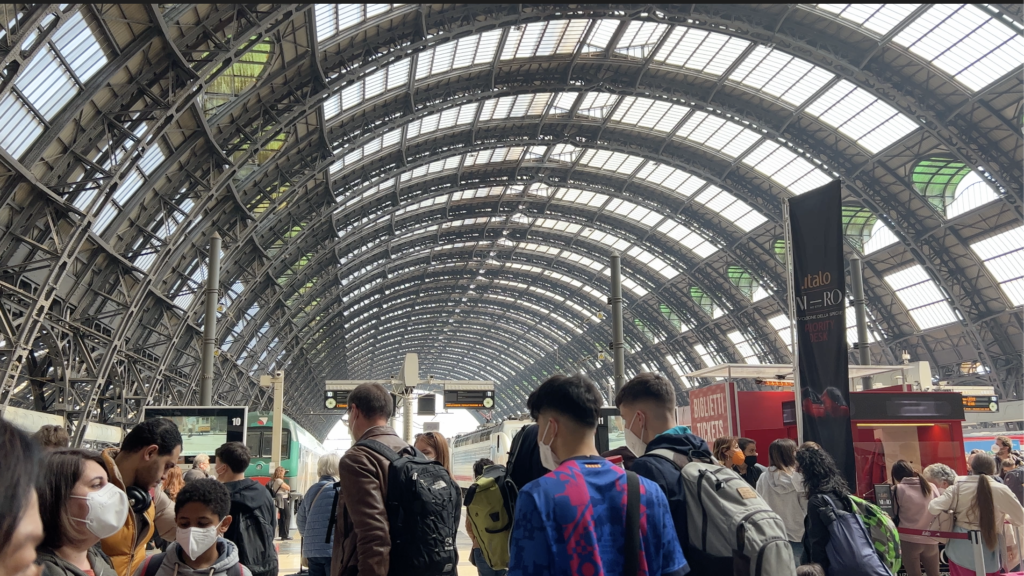
From Lake Como, I arrived in Verona by train. In Verona, the historic center is fairly small so attractions are within walking distance or a short bus ride from one another. Be prepared, however, to walk A LOT. I journeyed to Venice by train, as well, going from Verona Porta Nuova to Venezia S. Lucia. Prepare for even more walking when you visit Venice. While there is a water bus system, or vaporetto, to take you through the city’s canals, many attractions can only be accessed by walking. Get ready to use your Google Maps to guide yourself through the labyrinth of Venetian streets.
TIP: To avoid cellular roaming fees, download the Google Maps app on your phone. Search the city you will explore on the app, and download a map of the city to access the map offline.
Things to Do
The attractions I decided to visit while in Northern Italy were based on my interests in film locations, Catholicism, history, architecture, and Renaissance art. The following sections are a brief overview of the places I visited during my trip. In my next posts, I will discuss my itinerary in more detail.
When you are deciding which attractions to visit and things to do, plan around your interests. Get familiar with the cities you will visit by watching YouTube videos and reading a few travel guides. After picking the sites you are interested in, whip out a map of the city and decide which places you can realistically visit based on the time you have and your means of transportation.
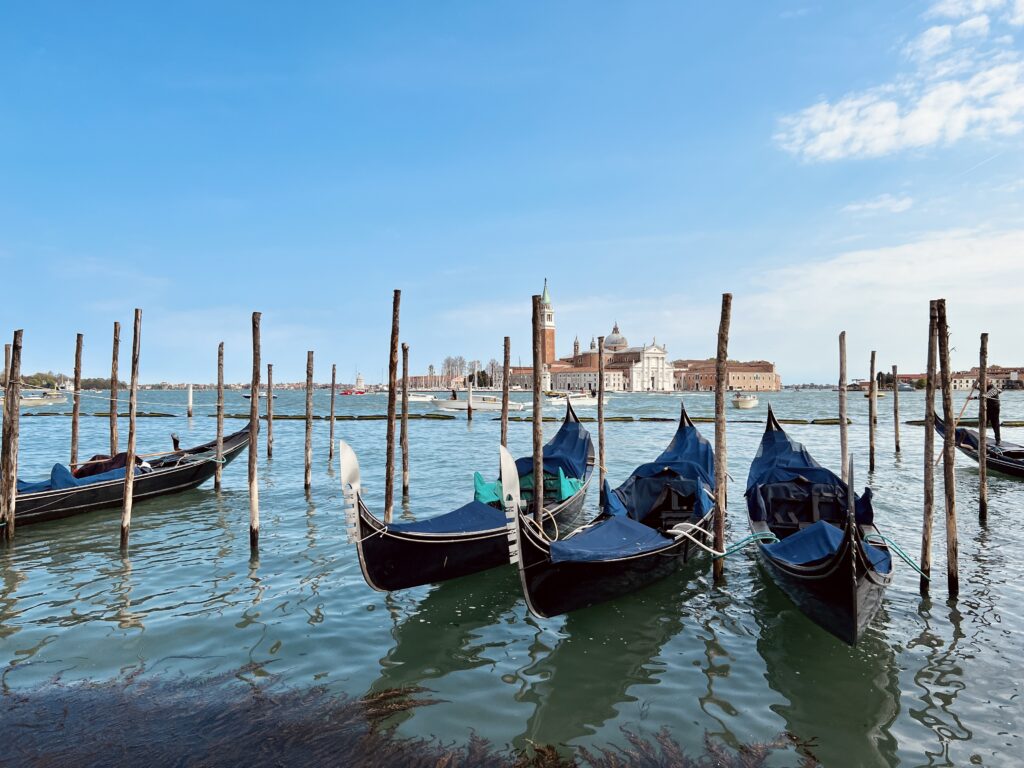
I used the travel planning app, Wanderlog, to organize my itinerary and reservations in one place. The app also let me to export all the places I wanted to see to Google Maps. If you like the itinerary I created, save this list for restaurant and attraction recommendations in Milan, Varenna, Bellagio, Verona, Padua, and Venice.
DAY 1: MILAN
- Walk around Piazza del Duomo
- Explore the famous Milan Cathedral (pre-book your visit here) and explore Galleria Vittorio Emanuele II
- Visit Sforzesco Castle
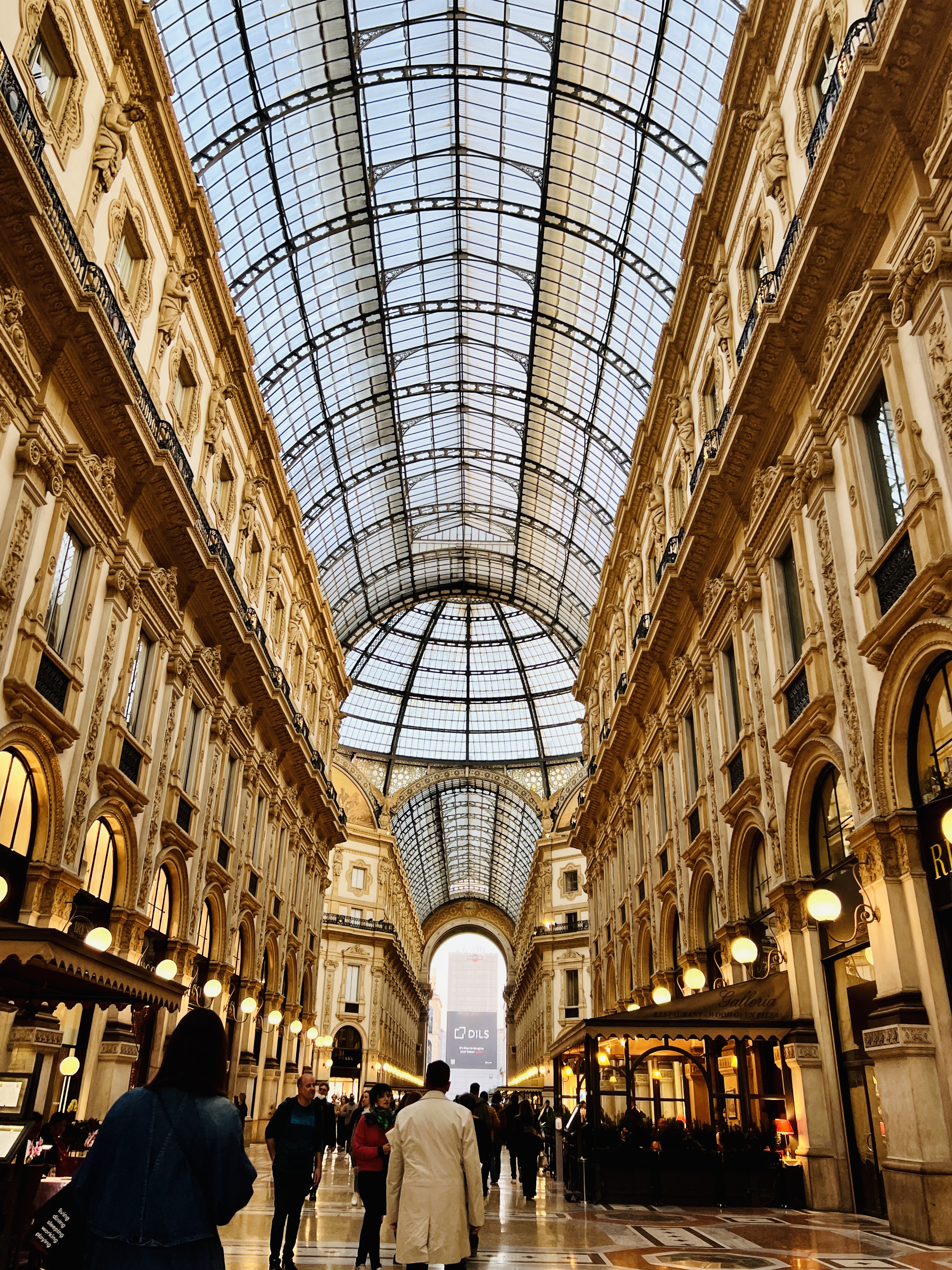
DAY 2: LAKE COMO (VARENNA)
The quaint, medieval town of Varenna lines the eastern banks of Lake Como and is only an hour train ride away from Milan. It is a peaceful place perfect for a Northern Italian passeggiata and aperitif with echoes of Cinque Terre.
- Take a train from Milan to Varenna
- Explore Varenna’s charming streets and piazza
- Walk around the gardens and museum of Villa Monastero
- Ride a taxi boat for a private tour of Lake Como
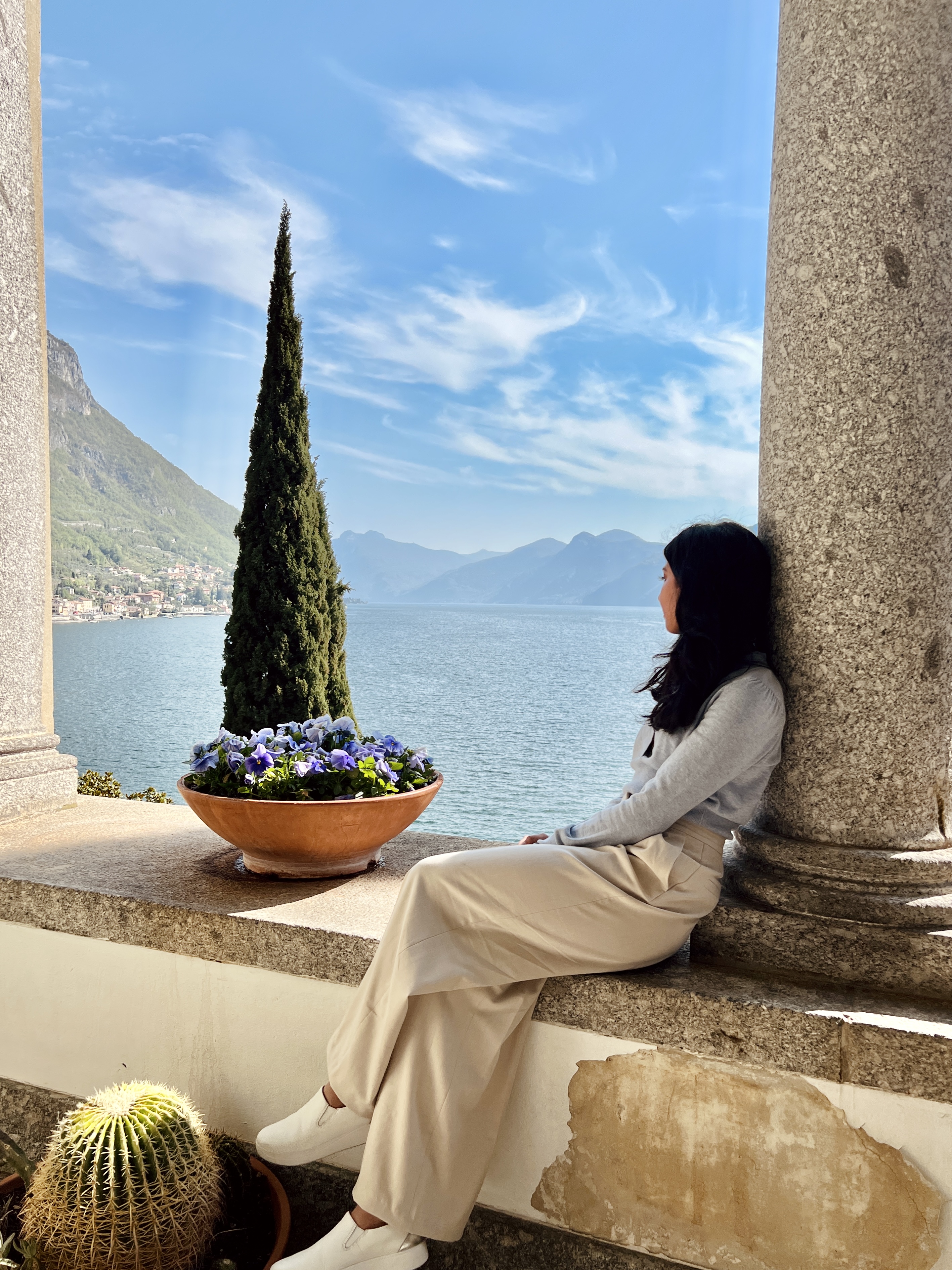
DAY 3: LENNO AND BELLAGIO
The small town of Lenno is home to the TikTok famous Villa del Balbianello. You may recognize the villa from Hollywood movies, Star Wars Attack of the Clones and Casino Royale. You can find the opulence of old money along the streets and villas of Bellagio. Stroll along Salita Serbelloni for a fantastic view of Lake Como, an aperitif, or a shopping spree for local silk.
- Take a ferry to Lenno
- Explore the gardens and museum of Villa del Balbianello
- Walk around Lenno and visit Chiesa Santo Stefano
- Take a ferry to Bellagio and walk up the famous Salita Serbelloni

DAY 4: VERONA
The medieval town made famous by Shakespeare’s Romeo and Juliet is like a mini Florence and Rome filled with charming streets, balconies, a colosseum, ancient monuments, ornate churches, and a picturesque riverbank. It is a two-hour ride away from Milan if you take the regular speed train.
- Take a train to Verona Porta Nuova
- Visit the Verona Arena and Piazza Bra
- Tour Casa di Giulietta and take a picture on the famous balcony
- Shop along Via Mazzini
- Walk to Piazza delle Erbe, Porta Borsari, Arco dei Gavi, and Castelvecchio
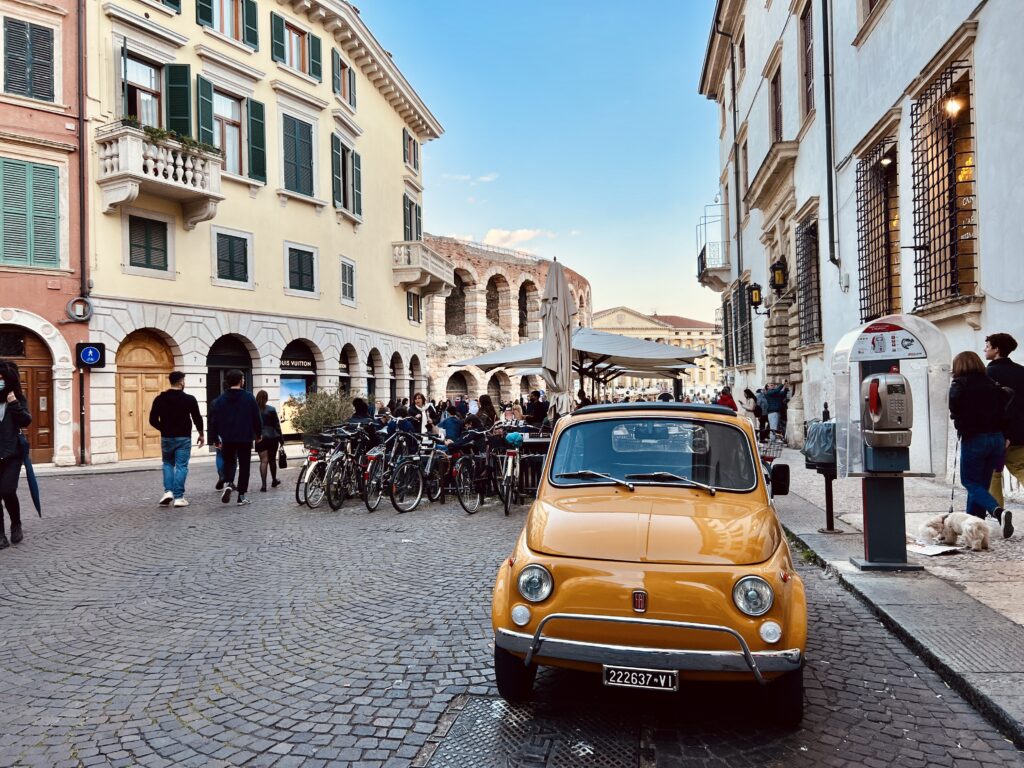
DAY 5: VERONA
- Visit Chiesa di San Fermo Maggiore
- Take the lift up Torre dei Lamberti for views of Piazza delle Erbe
- Stroll the markets of Piazza delle Erbe and Piazza dei Signori
- Visit the grand Basilica di Santa Anastasia and Cattedrale di Santa Maria Matricolare
- Walk across the Ponte Pietra bridge and tour the Museo Archaeologico al Teatro Romano
- Take the Funicolare di Castel San Pietro for a view of the city and the Adige River

DAY 6: DAY TRIP TO PADUA
My curiosity for Saint Anthony of Padua and the Proto-Renaissance painter, Giotto di Bondone, led me to the city of Padua. Similar to Milan, this college town in Northern Italy features modern and gothic facades. Winged lions scattered throughout the city hearken back to when Padua was part of the Republic of Venice.
- Take a train from Verona Porta Nuova to Padova
- Walk around Prato delle Valle
- Walk and explore the large Basilica di Sant’Antonio
- Tour the Scrovegni Chapel

DAY 7: VENICE
This is the last stop on this Northern Italy itinerary. Jade canals lined with gothic palaces, narrow streets, and small bridges whose steps have felt hundreds of years of footprints pull you into a time-traveling urban jungle. I have never seen a city as unique as Venice, and I understand why millions have flocked to this floating republic. My three days in Venice let me to explore the less-touristy neighborhoods of Cannareggio and Dorsuduro, the famous San Marco, and the colorful island of Burano.
- Take a train from Verona Porta Nuova to Venezia S. Lucia
- Explore the Cannareggio district to shop and dine
- Walk across Ponte Chiodo
- Walk to Rialto Bridge and traverse the famous bridge
- Take a vaporetto throughout the Grand Canal
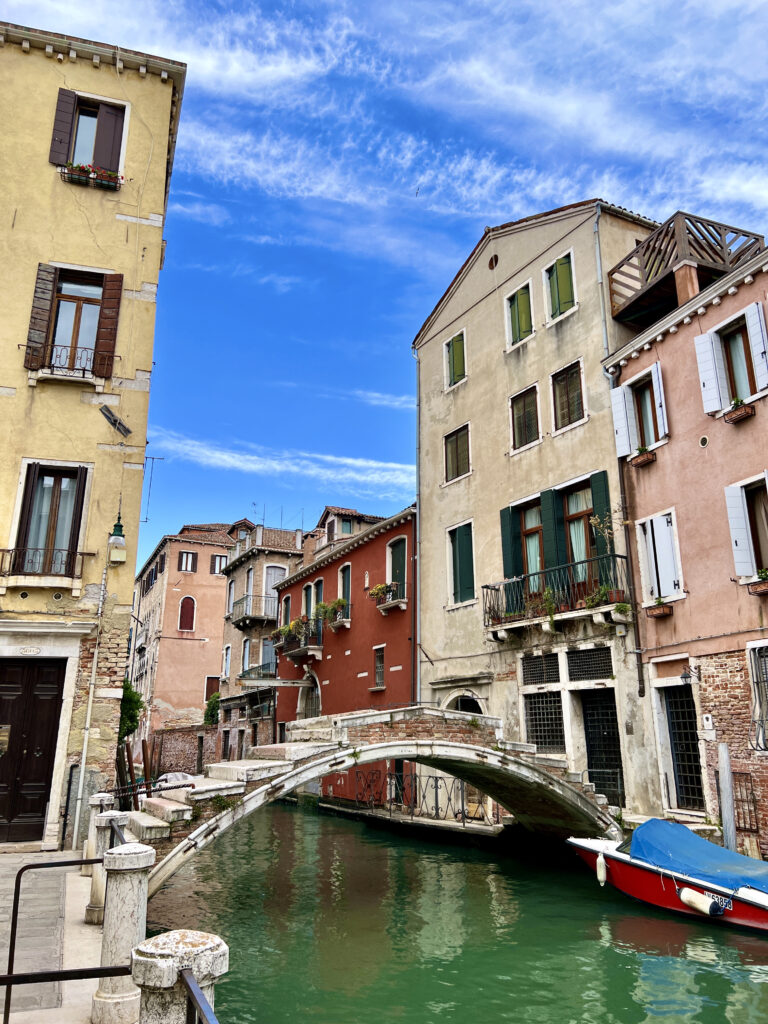
DAY 8: VENICE
- Walk to the massive Basilica di Santa Maria Gloriosa dei Frari
- Explore the Dorsuduro
- Visit Campo San Barnaba and ride a gondola
- Walk across Ponte dell’Accademia
- Walk around St. Mark’s Square
- Tour Doge’s Palace, Museo Correr, St. Mark’s Basilica, and St. Mark’s Campanile (I highly recommend pre-booking these sites to avoid lines)
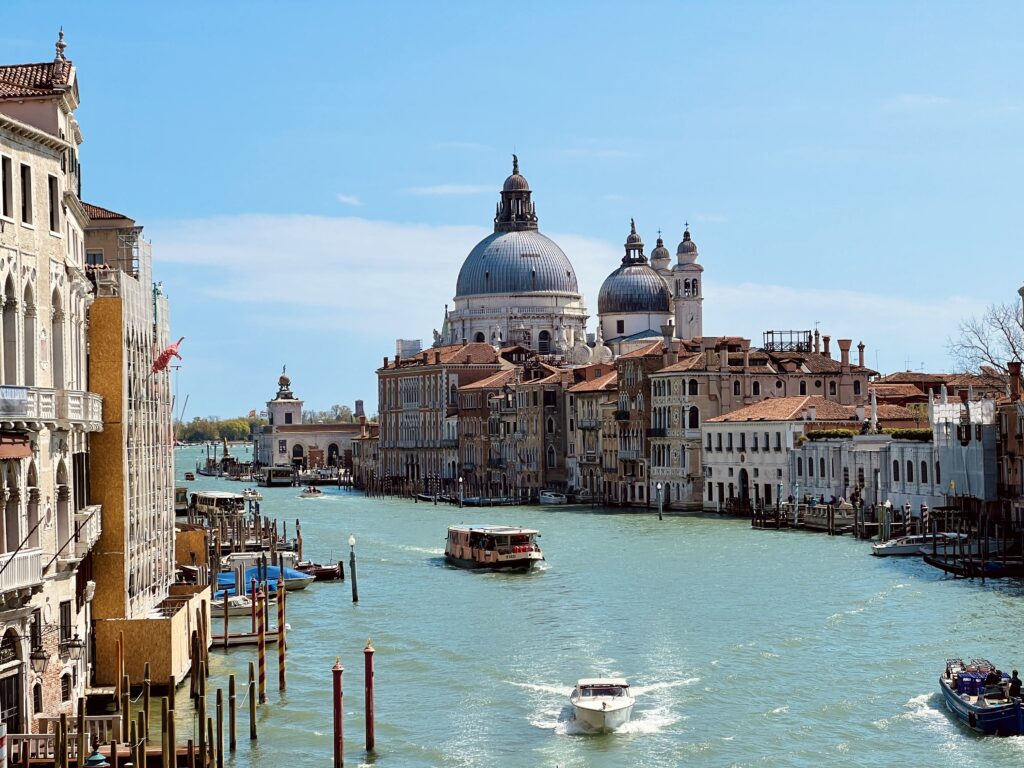
DAY 9: MURANO AND BURANO
- Take the vaporetto from Ferrovia or Fte. Nove to Murano (€8 valid for 60 minutes)
- Explore Murano and the glass blowing workshops
- Take the vaporetto from Murano to Burano
- Walk around Burano and and its colorful alleyways
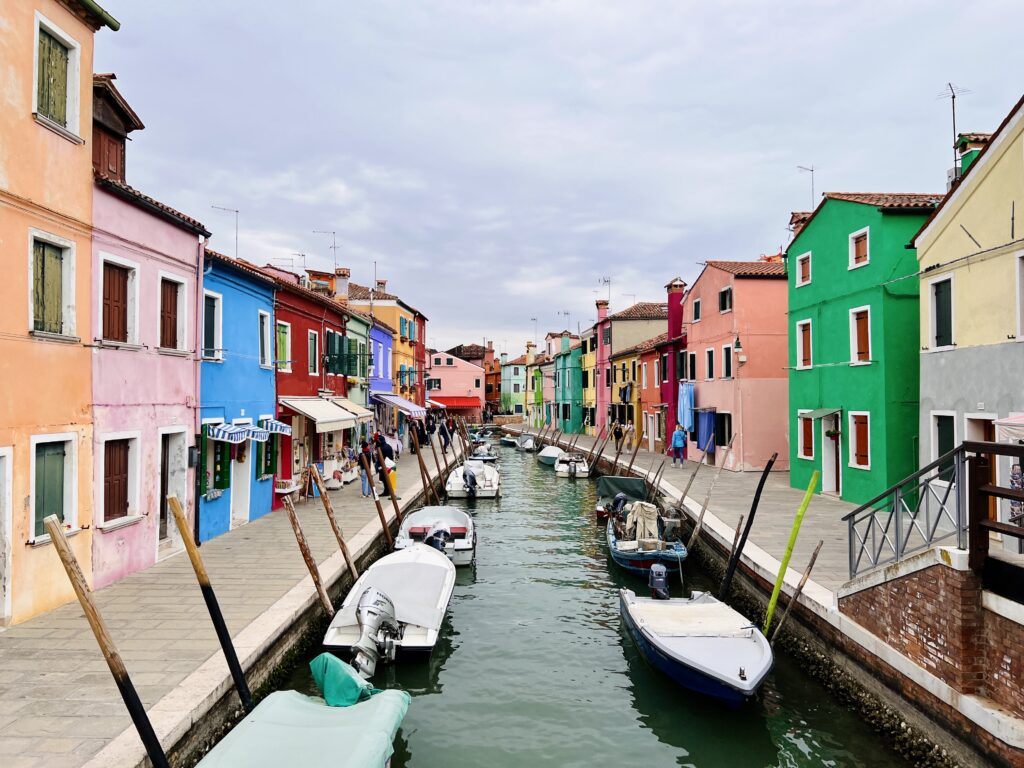
Conclusion and Additional Tips
You have made it to the end of the post! I truly hope that this guide will help you in planning your trip to Northern Italy. Please note that the cities in my post are not the only places to visit when you visit Northern Italy. There is a treasure trove of towns, cities, and sites including Crema, Bergamo, and Lake Garda! Before you make your travel plans or hop on that plane, I want to leave you with some additional tips.
LANGUAGE: Learn some of the Italian language. While Italy is a tourist destination and many people speak English, it is still useful to know important phrases and words. When I went to non-tourist spots, I needed to speak Italian to express my needs. The Google Translate app was a lifesaver and downloading Italian let me translate offline.
PACKING: Pack light, especially if you are relying on public transportation. Many of Northern Italy’s regional trains do not have spaces for large luggage.
SKIP THE LINE: Pre-book tickets to the attractions you would like to see if you are traveling during a busy season. Making reservations will help you skip the long lines.
NON-DIRECT FLIGHTS: My flight to Milan and back to San Francisco had transfers in Munich and Frankfurt. Make sure you have ample time to get to your next flight because these airports are huge.
COVID-19 TESTING: I traveled when the U.S. required a negative COVID-19 test to return to the country. Not wanting to be stressed with finding a testing site in Venice, I purchased an authorized, BinaxNOW at-home antigen test that I performed in my hotel the night before my flight. Check with your airline and country to see which tests are accepted.
BRING EXTRA MONEY: Many cities impose a city tax on visitors that can easily sneak into your restaurant or hotel bill.
PACK SOME COINS: Cashiers will often encourage you to have exact change or pay with an amount that is easy to subtract the actual price from.



